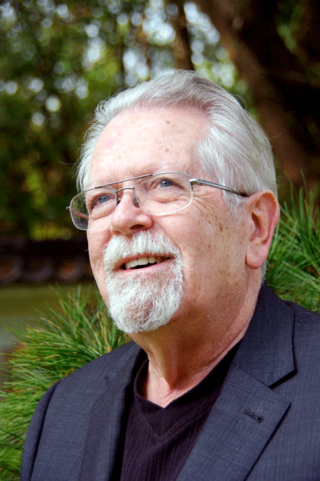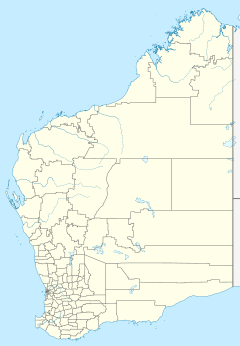
Sarin is an extremely toxic organophosphorus compound. A colourless, odourless liquid, it is used as a chemical weapon due to its extreme potency as a nerve agent. Exposure can be lethal even at very low concentrations, where death can occur within one to ten minutes after direct inhalation of a lethal dose, due to suffocation from respiratory paralysis, unless antidotes are quickly administered. People who absorb a non-lethal dose and do not receive immediate medical treatment may suffer permanent neurological damage.

Shoko Asahara, born Chizuo Matsumoto, was the founder and leader of the Japanese doomsday cult known as Aum Shinrikyo. He was convicted of masterminding the deadly 1995 sarin gas attack on the Tokyo subway, and was also involved in several other crimes. Asahara was sentenced to death in 2004, and his final appeal failed in 2011. In June 2012, his execution was postponed due to further arrests of Aum members. He was ultimately executed along with other senior members of Aum Shinrikyo on July 6, 2018.

The Tokyo subway sarin attack was an act of domestic terrorism perpetrated on 20 March 1995, in Tokyo, Japan, by members of the cult movement Aum Shinrikyo. In five coordinated attacks, the perpetrators released sarin on three lines of the Tokyo Metro during rush hour, killing 13 people, severely injuring 50, and causing temporary vision problems for nearly 1,000 others. The attack was directed against trains passing through Kasumigaseki and Nagatachō, where the National Diet is headquartered in Tokyo.

John Gordon Melton is an American religious scholar who was the founding director of the Institute for the Study of American Religion and is currently the Distinguished Professor of American Religious History with the Institute for Studies of Religion at Baylor University in Waco, Texas where he resides. He is also an ordained minister in the United Methodist Church.
The Matsumoto sarin attack was an attempted assassination perpetrated by members of the Aum Shinrikyo doomsday cult in Matsumoto, Nagano Prefecture, Japan on the night of June 27, 1994. Eight people were killed and over 500 were harmed by sarin aerosol that was released from a converted refrigerator truck in the Kaichi Heights area. The attack was perpetrated nine months before the better-known Tokyo subway sarin attack.

On November 5, 1989, Tsutsumi Sakamoto, a lawyer working on a class action lawsuit against Aum Shinrikyo, a doomsday cult in Japan, was murdered, along with his wife Satoko and his child Tatsuhiko, by perpetrators who broke into his apartment. Six years later, following the 1995 attack on the Tokyo subway, the murderers were uncovered and it was established that the murderers had been members of Aum Shinrikyo at the time of the crime.
Hideo Murai was a member of the Aum Shinrikyo cult and one of the perpetrators responsible for the Sakamoto family murder. He also helped plan the Tokyo subway sarin attack. Murai held a doctorate in astrophysics. He was reportedly the number three person in the Aum leadership, after Shoko Asahara and Kiyohide Hayakawa. He headed Aum Shinrikyo's Ministry of Science and Technology.
Wangkatha, otherwise written Wongatha, Wongutha, Wankatja, Wongi or Wangai, is a language and the identity of eight Aboriginal Australian peoples of the Eastern Goldfields region. The Wangkatja language groups cover the following towns: Coolgardie, Kalgoorlie, Menzies, Leonora and Laverton; these towns encompass the North-eastern Goldfields region of Western Australia.
James R. Lewis was an American philosophy professor at Wuhan University. Lewis was an academic, scholar of religious studies, sociologist of religion, and writer, specializing in the academic study of new religious movements, astrology, and New Age.

The Public Security Intelligence Agency is the domestic intelligence agency of Japan. It is administered by the Ministry of Justice and is tasked with internal security and espionage against threats to Japanese national security based on the Subversive Activities Prevention Act and the Act Regarding the Control of Organizations Which Committed Indiscriminate Mass Murder. Any investigation conducted by the agency needs to go through the Public Security Examination Commission (PSEC) in order to determine if there is a justification to investigate and clamp down on an organization's activities.

A meteor air burst is a type of air burst in which a meteoroid explodes after entering a planetary body's atmosphere. This fate leads them to be called fireballs or bolides, with the brightest air bursts known as superbolides. Such meteoroids were originally asteroids and comets of a few to several tens of meters in diameter. This separates them from the much smaller and far more common "shooting stars", that usually burn up quickly upon atmospheric entry.

Edjudina Land District is a land district of Western Australia, located within the Eastern Land Division.

Beria is an abandoned town in the Goldfields-Esperance region of Western Australia, located 8 kilometres (5 mi) north of Laverton on the Laverton-Leonora Road.
Yoshihiro Inoue was a former Aum Shinrikyo leader and terrorist who was executed in Japan in 2018. He was responsible for coordinating the Tokyo subway sarin attack in 1995. His holy name was Aananda and his stage in the cult was Master Shogo.

Aleph, better known by their former name Aum Shinrikyo, is a Japanese new religious movement and doomsday cult founded by Shoko Asahara in 1987. It carried out the deadly Tokyo subway sarin attack in 1995 and was found to have been responsible for the Matsumoto sarin attack the previous year.
Glenorn is a pastoral lease that has operated as both a sheep and cattle station. It is located about 40 kilometres (25 mi) south east of Leonora and 33 kilometres (21 mi) north east of Kookynie in the Goldfields of Western Australia,
Minara Station is a pastoral lease that has operated as a sheep station and is now a cattle station in Western Australia.
The Managua event was an explosion that was widely reported as a possible meteorite fall on 6 September 2014 in Managua, Nicaragua, near the Augusto C. Sandino International Airport runway. Its actual cause remains undetermined.
Kiyohide Hayakawa was a member and deputy leader of the Japanese doomsday-cult group Aum Shinrikyo. Hayakawa was born in Hyōgo Prefecture in 1949. After Aum Shinrikyo adopted a "ministry system", he was the Minister of Construction. Hayakawa was the person behind the organization's uranium mining at Banjawarn in Australia.
Lin Tainan, was a Japanese convicted murderer and former member of Aum Shinrikyo. He is of Korean descent, and changed his name to Koike Yasuo after taking his wife's surname after marriage. He was a former Aum Shinrikyo cult and a former senior cadre of the cult.










